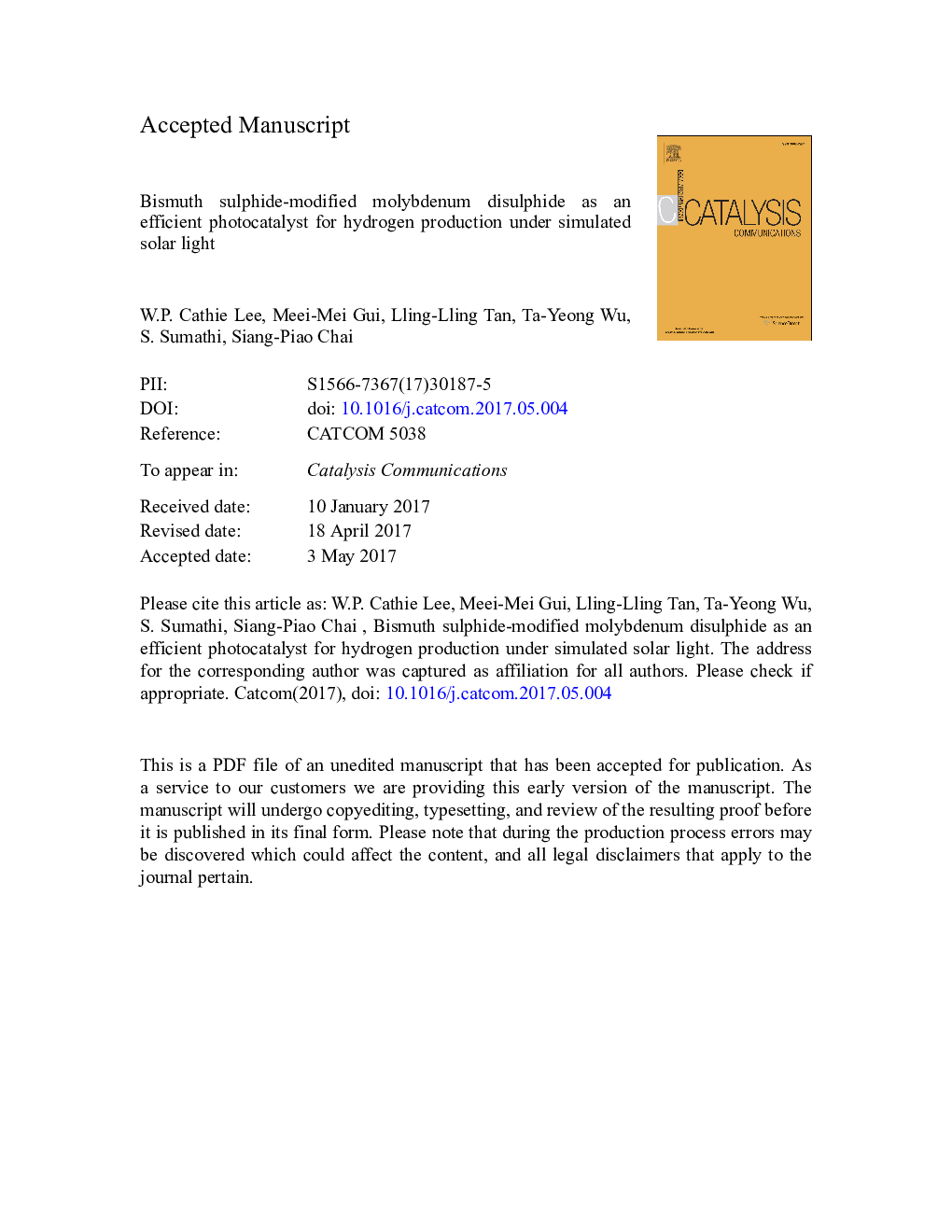| Article ID | Journal | Published Year | Pages | File Type |
|---|---|---|---|---|
| 4756482 | Catalysis Communications | 2017 | 16 Pages |
Abstract
To overcome rapid electron-hole recombination and the need for employing noble metals as co-catalysts for photocatalytic water splitting, the present work reports on the fabrication of bismuth sulphide (Bi2S3)-modified molybdenum disulphide (MoS2) as an efficient hybrid photocatalyst. Under simulated solar light irradiation, the Bi2S3/MoS2 photocatalyst with an optimum molar ratio of Mo to Bi of 50% (mol/mol) achieved a H2 production rate of 61.4 μmol/h. The photocatalytic enhancement was attributed to an effective charge transfer mechanism between Bi2S3 and MoS2, as evidenced by photoelectrochemical characterization. A plausible reaction mechanism over the as-prepared Bi2S3/MoS2 photocatalyst was also proposed based on the experimental results obtained.
Related Topics
Physical Sciences and Engineering
Chemical Engineering
Catalysis
Authors
W.P. Cathie Lee, Meei-Mei Gui, Lling-Lling Tan, Ta Yeong Wu, S. Sumathi, Siang-Piao Chai,
